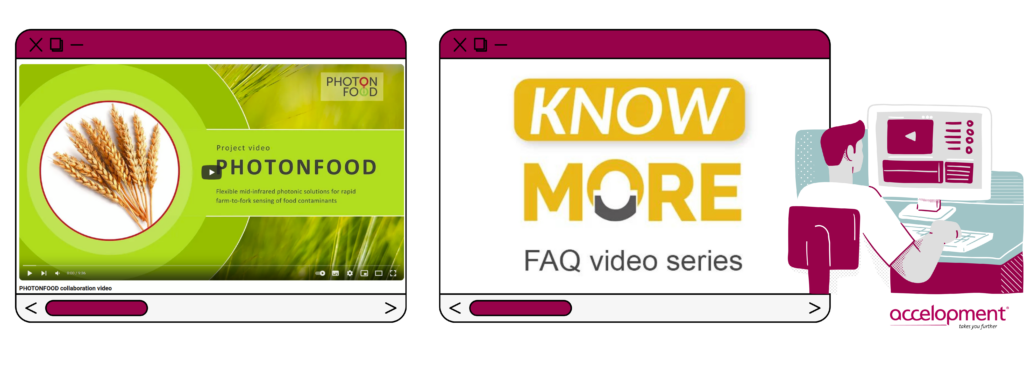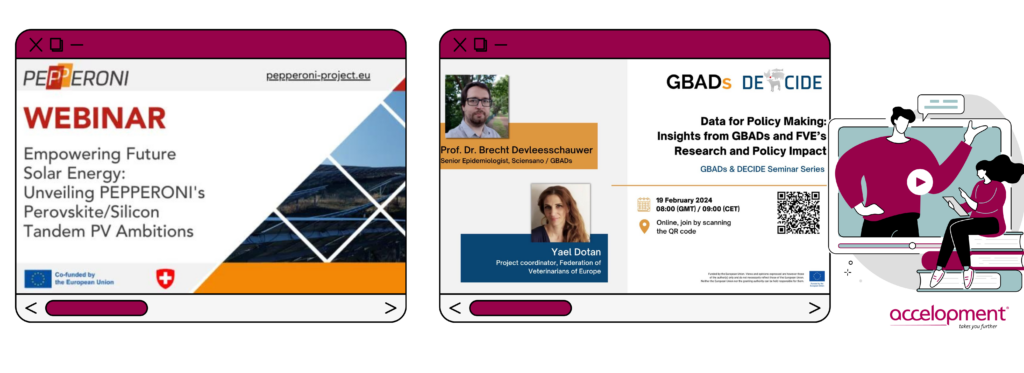Boost your impact – Further strategies to elevate Green Deal projects outreach
6th August 2024 at 8:00 am
Following up on the cluster activities insights to make your project’s outreach stand out in the Green Deal proposals, we will share our experiences and strategies for effective collaboration with other EU projects. The aim of forming a cluster is to facilitate synergies and knowledge exchange, ultimately accelerating scientific progress and innovation. When it comes to Green Deal projects, many of them do not have a cluster per se, which is why building on the project landscape to identify other consortia is a good way to elevate your Impact.
Cluster activities are special compared to individual project activities because they demonstrate the dedicated research community in Europe in specific technologies and applications. They offer increased reach in areas such as climate adaptation, renewable energy, energy efficiency, biodiversity, circular economy, sustainable agriculture, and clean transportation. They enable networking and tackling challenges with initiatives closely related to your project’s topic. Additionally, they are cost-efficient due to collaborative research efforts, pooling resources, and shared platforms, enhancing overall impact and innovation capacity.

3. A closer look at clustering activities in the Green Deal projects
When it comes to the way they are formed and organised, not all clusters are alike: while some are formed ad hoc, for example, for a specific event, others are already defined before a group of funded projects starts. Formats can vary from traditional conferences to more interactive, dynamic setups involving workshop sessions, roundtables, and prototype demonstrations.

Our project PHOTONFOOD is part of the cluster ECREAM (European Cluster of Research projects for Environmental and Agri-food Monitoring) formed to ensure the compatibility of results and knowledge sharing. One major collaboration activity to mention was a joint booth at the SPIE Photonics Europe which not only reduced the costs per project but also offered a variety of insights across the projects to the visitors. This cluster has a joint website and social media channels, and they regularly update each other about the projects’ achievements and next steps to identify new collaboration opportunities. It will remain a collaboration platform in the long term as new members can join it anytime.
Most of our energy projects, however, do not have a dedicated cluster and address this by joining forces with related initiatives differently. For example, PEPPERONI participates in a cross-project initiative with nine EU-funded projects focused on perovskite technology, showcasing the dedicated PV research community in Europe tackling the challenges of the specific technology. HEAT-INSYDE will host a dedicated energy storage workshop session at Sustainable Places as an encouraging event for EU project clustering and networking.
4. Explainer videos – break down intricate information into easily digestible content
Creating an explainer video for collaborative projects is crucial in effectively communicating complex concepts. The aim is to simplify technical jargon, present detailed processes, and illustrate the project’s outcomes clearly and engagingly. Moreover, explainer videos highlight significant milestones and achievements throughout the project’s lifecycle. They can feature testimonials from project participants, adding a personal touch that resonates with viewers.
Most Green Deal projects are particularly attractive to communicate to citizens because many people are interested in these topics, and they often lend themselves to compelling visual storytelling. The focus on sustainability, renewable energy, and environmental conservation provides ample opportunities to showcase beautiful and inspiring images, making the content more relatable and engaging to a broader audience. This makes explainer videos an invaluable asset for disseminating information and raising awareness.
The videos can be animated and/or in the form of an interview. For example, the consortium of PHOTONFOOD showcases how to improve food safety in a single video, combining statements from the partners while showcasing their devices and infrastructures. The early-stage researchers of the MORE project recorded the knowMORE series, answering the main FAQs they received while explaining the meaning of complex concepts in an easy-to-follow way.

5. Industry-oriented workshops and Q&A sessions – uncover new insights and perspectives
Industry-oriented workshops play a crucial role in bridging the gap between research and practical application. By addressing industry-specific challenges and opportunities, these workshops ensure that project outcomes align with real-world needs and can be effectively implemented. They also facilitate the exchange of best practices, foster partnerships, and drive innovation. Incorporating Q&A sessions enhances transparency and engagement, allowing stakeholders to seek clarification, express concerns, and offer suggestions directly to the team. This two-way communication builds trust and ensures that stakeholder perspectives are valued.
While many EU companies acknowledge the importance of the Green Deal, demonstrating the feasibility and appeal of green solutions is essential. Green technologies offer benefits like enhanced brand reputation, improved employee satisfaction, and resilience against future regulations, which may not be immediately evident. Clearly articulating these long-term advantages can e.g. help companies appreciate the value of investing in green solutions. Workshops and open forums are vital in this process, ensuring that green solutions are both feasible and appealing to your project stakeholders.
The industry-oriented webinar launched by PEPPERONI stands as an example: “Empowering Future Solar Energy: Unveiling PEPPERONI’s Perovskite/Silicon Tandem PV Ambitions“. It attracted about 70 participants from various sectors, including energy, utilities, PV manufacturing, education, research, and high-tech development. Given the nature of the project, this type of activity could also be oriented to policymaking, similar to DECIDE’s “Data for Policy Making: Insights from GBADs and FVE’s Research and Policy Impact.”

accelopment as a Green Deal project partner for communication and dissemination
We at accelopment have been a reliable cooperation partner for numerous research and innovation projects with a focus on the European Green Deal, also beyond the energy-mobility interface. PHOTONFOOD aims to provide a portable solution for flexible farm-to-fork sensing of microbial and chemical contamination in food products and along the food production chain, HEAT-INSYDE is bringing advanced heat batteries in residential heat and electric systems closer to market through real-life demonstration in different climates, MORE is an industry-academia partnership to educate researchers on heavy-duty mobile machinery and DECIDE is developing data-driven control and prioritisation of non-EU-regulated contagious animal diseases. Our communications team values the importance of knowledge sharing and building on previous experiences, and as your sparring partner, we can assist you by offering guidance and tips to elevate your Impact score and to implement the communication, dissemination, and exploitation of your research or innovation.

Miriam Frances
Project Manager Communications

Joanna Pleasniak
Project Manager Communications
